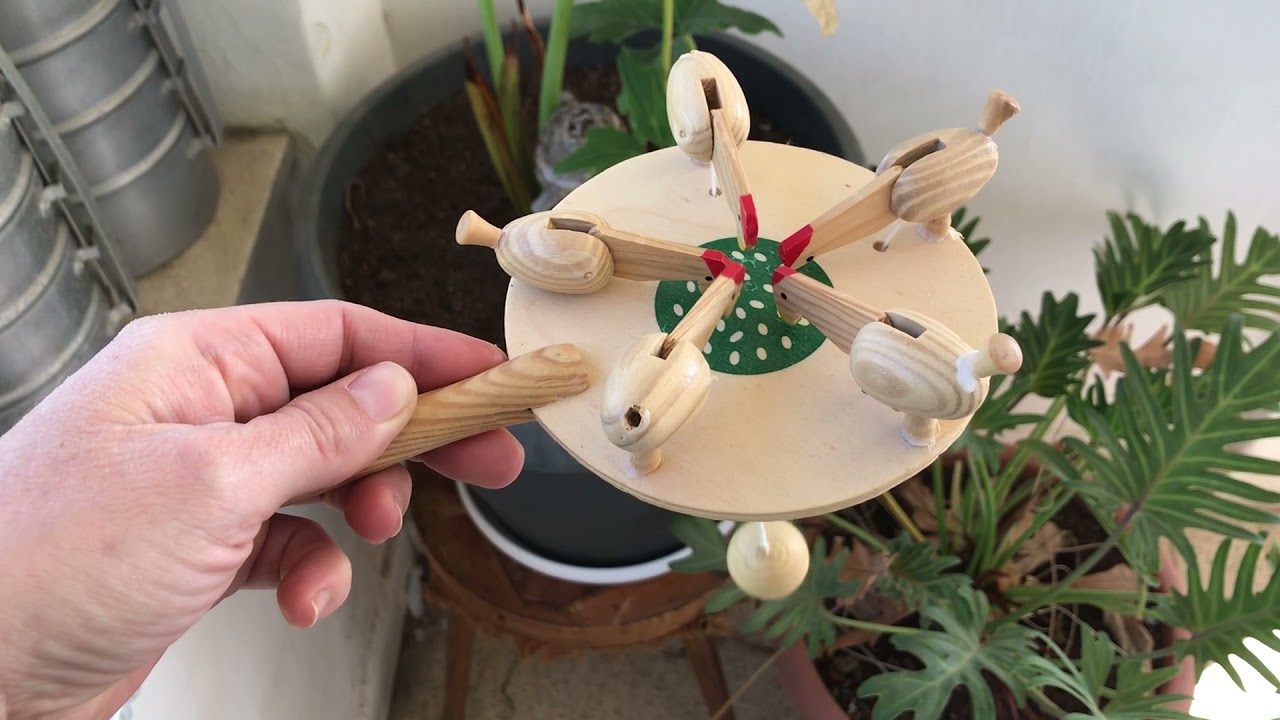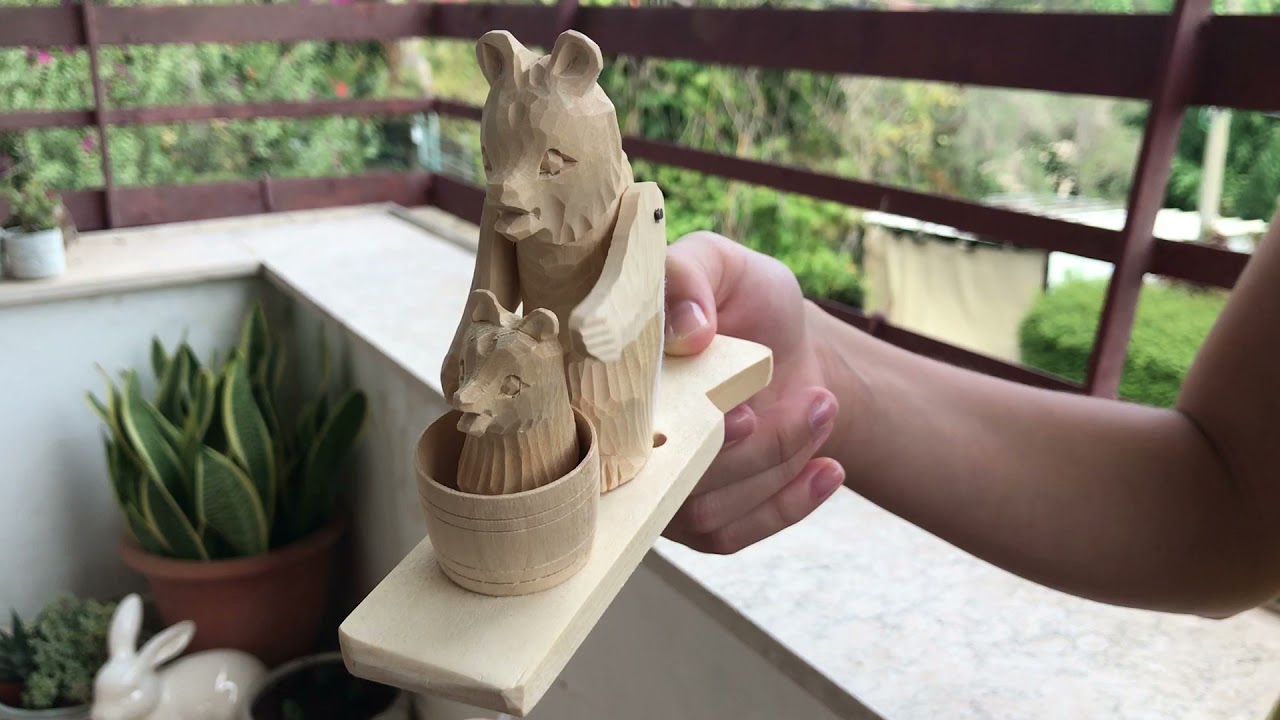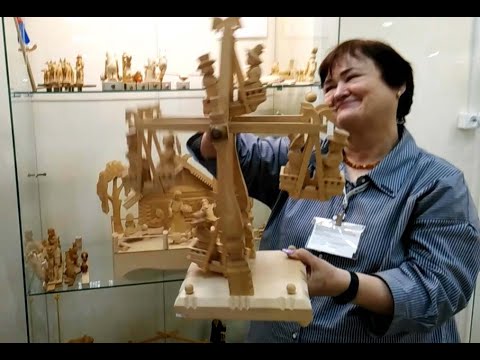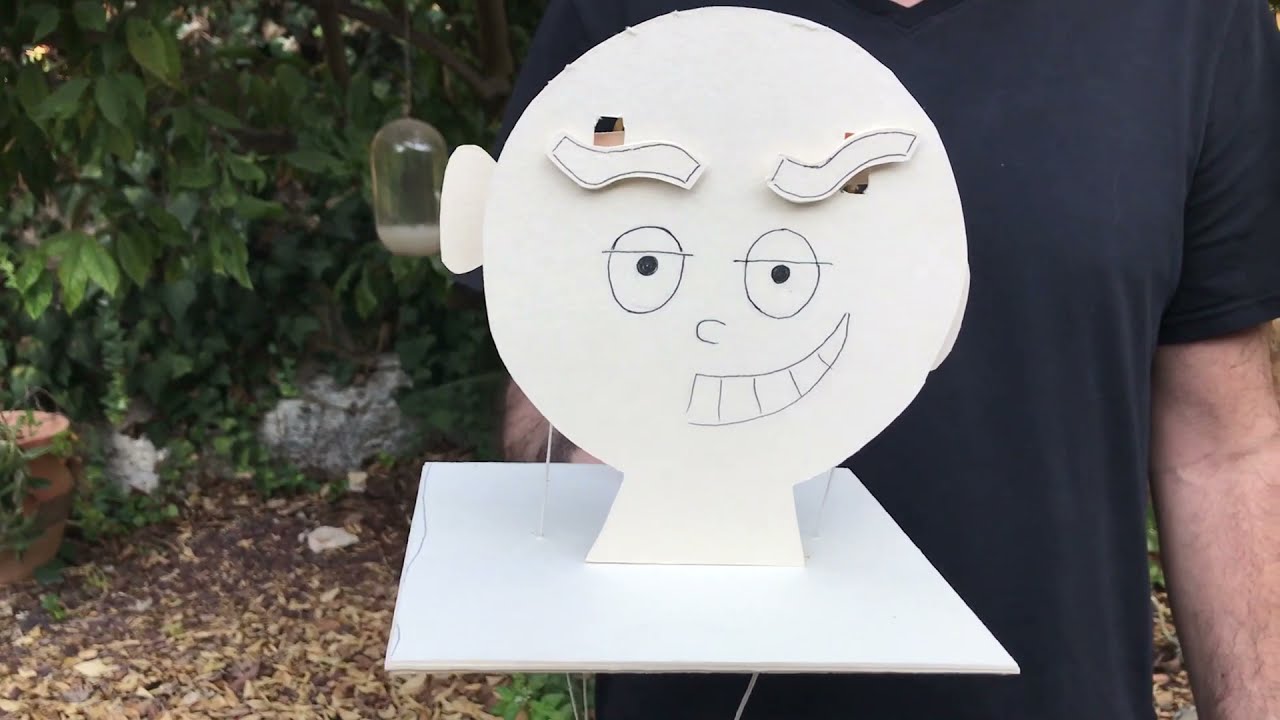A round engine on strings, and other discoveries
As I stated before, I consider myself to have light technical abilities.
I love mechanisms, as long as they are not too complicated.
Things with a single and clear principle of action, explained to me slowly so that I can understand quickly, always make my heart vibrate, blow my mind with excitement, and ignite my imagination.
The toy I'm writing about today was given to me by my parents when they returned from one of their trips around the world.
It's a flat wooden racket with several wooden hens standing in a circle on top of it. A large wooden ball is hanging by a string beneath it, with each string connected to one of the hens above.
By moving the racket in a circular motion, the hens start pecking the racket one at a time, in a cute and addictive rhythm.
What more could a person like me, with light technical skills, ask for?! An engine that is a weight on strings!!! Excellent!
How does it work?
The movement of the ball stretches the strings one at a time.
While one string is stretched, the others are released.
The stretched string pulls anything attached to it. When the tension in the string drops, everything returns to its place and the movement stops. Genius!
The best is yet to come.
I was so excited by the discovery of this mechanism that I immediately started looking for other things that work in the same way.
I assumed there must be plenty of other toys using the same mechanism.
To my surprise, it wasn't that common, and certainly not easy to find any.
When I finally did find one, it was worth all the searching. A hand-carved wooden bear appeared on the screen, and the circular movement of the ball made the bear move. The movement in this toy wasn't circular like in the pecking hens, it was repetitive but moving back and forth. Also cool!
The website was in Russian, so I started collecting clues to help me solve the mystery of its story and origin.
I followed them like following a trail of crumbs in the forest until I discovered there was a Russian village specializing in making hand-carved wooden toys with the favorite mechanism of a ball on strings.
Bears washing laundry, tying shoelaces, playing the guitar, rabbits skiing, giving their youngsters a bath, and many other amusing and cute themes.
I put a trip to this village on my wishlist. I'm curious to see it with my own eyes. But in the meantime, I ordered a delivery:
Wait, what about the village??
The village is called Bogorodsk (Богоро́дск), and it is said that the tradition of carving wooden toys began there as early as the 17th century.
There are several legends describing how it all began. One of the most common and loved ones is about a creative mother of a poor family who tried to amuse her young children by making them toys of her own creation.
She tried different materials. First, she tried cloth and straw, but they didn't last long. Then, in her search for more durable materials, she tried using wood, which proved itself better in the face of her children's exploits.
One day, the father of this family took one of her creations in order to try and sell it in the market, and a merchant bought it. The merchant enjoyed the entertaining toy so much that he came back to place a large order for them, and the rest is history.
It seems there are several beginnings to these legends; however, no matter which version you choose to begin with, they all continue with the merchant buying one item and coming back for a lot more.
The next part of the story describes how to cope with the large production needs, apprentices from the village were taught different parts of the job, and that is how over the years, a large part of its residents got engaged in the wood carving craft.
By the way, although I found this village through my search for the ball-on-string mechanism, they make many other toys operated by other equally interesting mechanisms, each of which deserves a post on its own.
This next video (20 minutes in Russian...) contains demonstrations of some of them from the museum dedicated to this village's art.
Oh Tegosh, how do I get one?
I found two stores that sell unique Russian products, one called "Maison Russe" and the other "Tradestone Gallery."
Later, I also found a specialized store called "Bogorodskaya Toys" on Etsy as well.
My fingers were tickling
I must admit that something in the simplicity of this mechanism really called me to try and create something myself, something that is activated in the same way.
I preferred it to be simple and quick, just to see if I really understood how it works.
I had compressed cardboard paper at home; therefore, this was the material chosen for the task. All I needed more was a theme.
Luckily, my daughter Yali saved the situation and delivered the goods.
It certainly wasn't simple nor quick. It took me a long time to make the adjustments for the compressed cardboard paper, the theme, and the chosen movements, but it was very educational, enjoyable, and in the end, definitely satisfying.
Here it is - our version –
and of course, the child and the muse...
Mesmerized
As you can understand, I was completely captured by this mechanism, and I find it quite odd I could not find more uses for it on the web.
So, if you've come across any item using it or created anything using this method yourself, I'd be more than happy if you share.
I'm so curious to see what other directions it can take. If you liked our little home version and need help to create it yourself, do not hesitate to ask; I will help gladly.
For more resources about the village:
https://bridgetomoscow.com/bogorodsk-wooden-toys






